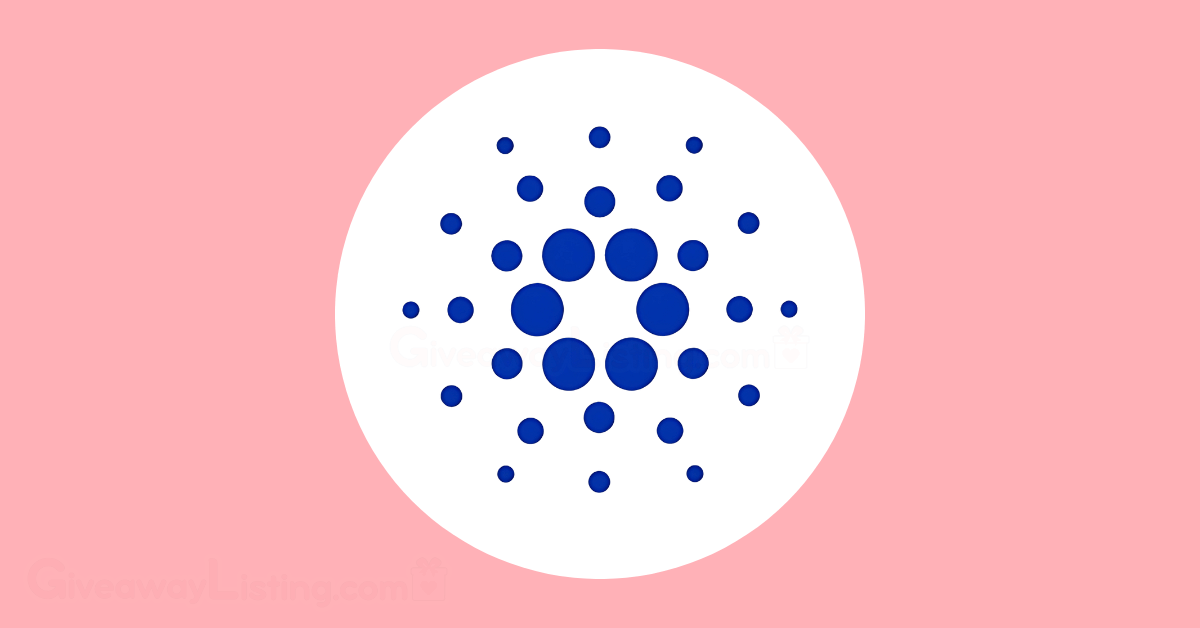What is Cardano? ADA Explained – December 2025
Cardano, and its native cryptocurrency ADA, often comes up in conversations about the future of digital finance. It’s a name that carries weight, partly because of its ambitious goals and its unique origin story.
This guide breaks down what Cardano is all about, explaining its purpose and what sets it apart in the crowded crypto field.
Cardano is a public blockchain platform. It was founded by Ethereum co-founder Charles Hoskinson and launched in 2017 after a development period that began in 2015. At its core, Cardano is a decentralized network that allows for secure, peer-to-peer transactions and the creation of smart contracts and decentralized applications (dApps). Its native cryptocurrency is called ADA, named after the 19th-century mathematician Ada Lovelace, who is considered the world’s first computer programmer. The smallest unit of ADA, a lovelace, is another nod to her.
The platform is built for innovators, visionaries, and developers who need a secure and scalable foundation to build on. Its applications are wide-ranging, from creating DeFi services that offer lending and trading without a central authority, to managing supply chains for agricultural products, and even issuing and verifying digital identities and academic credentials.
For instance, Cardano has been used to create tamper-proof records for educational qualifications and to track products from farm to table. The goal is to provide a more secure, transparent, and fair global system for finance, business, and governance. What truly makes Cardano different is that its development is based on peer-reviewed academic research, ensuring that its technology is vetted for security and stability before being implemented.
Why is Cardano Unique? ADA Features
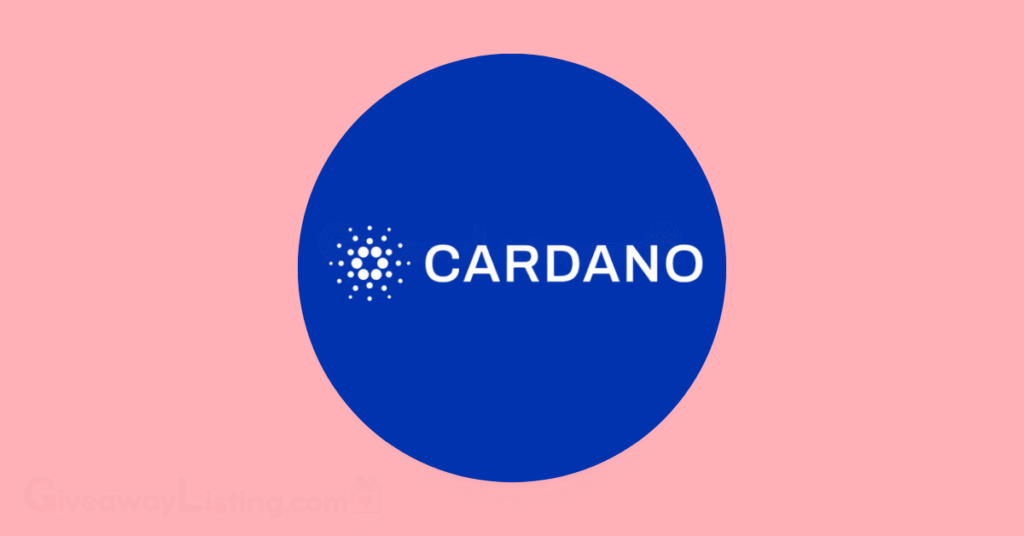
Now that you have a picture of what Cardano is, let’s look at the specific features that make it stand out. It’s not just another blockchain; its entire philosophy and architecture were designed differently from the ground up.
Cardano’s development is methodical and academic. Every major update and feature is built upon a foundation of scientific papers that are reviewed by academics and experts in cryptography and engineering. This slow-and-steady approach aims to build a highly secure and sustainable network, avoiding potential pitfalls by solving problems before the code is even written.
The Ouroboros Proof-of-Stake System
Cardano uses a Proof-of-Stake system called Ouroboros, which was the first of its kind to be provably secure through academic research. Ouroboros selects users to create new blocks based on the amount of ADA they “stake” or pledge to the network. This makes the network incredibly energy-efficient.
Some reports indicate its PoS system is up to four million times more energy-efficient than Bitcoin’s model. Anyone holding ADA can participate by delegating their stake to a pool, earning rewards for helping to secure the network.
Dual-Layer Architecture
Cardano’s design is separated into two distinct layers, which helps with efficiency and scalability.
- Cardano Settlement Layer (CSL): This is where all the transactions using ADA happen. It’s the ledger that tracks the movement of value, optimized for speed and low fees.
- Cardano Computation Layer (CCL): This layer is where all the smart contract and dApp activity takes place. Separating computation from the main transaction ledger prevents the network from getting congested, which can be an issue on other blockchains.
Native Tokens
On many blockchains, creating new tokens requires a complex smart contract. On Cardano, tokens are native, meaning they are treated with the same priority as ADA itself. This makes creating, managing, and sending tokens simpler, cheaper, and more secure because the functionality is built directly into the blockchain’s core.
This native token capability is a magnet for new projects, many of which engage the community through token distribution events. As of mid-2025, there are over 10.8 million native tokens on the network.
The table below compares Cardano with other related platforms:
| Feature | Cardano (ADA) | Bitcoin (BTC) | Ethereum (ETH) | Solana (SOL) | Ripple (XRP) |
|---|---|---|---|---|---|
| Consensus | Proof-of-Stake (Ouroboros) | Proof-of-Work | Proof-of-Stake | Proof-of-History (PoH) | XRP Ledger Consensus |
| Smart Contracts | Yes (Plutus) | No (Limited Scripting) | Yes (Solidity) | Yes (Rust, C++) | Yes (Hooks) |
| Energy Use | Very Low | Very High | Very Low | Low | Very Low |
| Avg. TPS | 250 (potential for much more) | 5-7 | 15-30 | 65,000 | 1,500 |
| Native Tokens | Yes | No | No (ERC-20 via contracts) | No (SPL via contracts) | Yes |
| Governance | On-Chain Community Voting | Decentralized Developer Group | Off-Chain Community/Devs | Off-Chain Community/Devs | Decentralized Validator Nodes |
Cardano’s background is steeped in a deliberate and long-term vision. The development roadmap is split into five distinct eras, each named after a historical figure: Byron (Foundation), Shelley (Decentralization), Goguen (Smart Contracts), Basho (Scaling), and Voltaire (Governance). The Voltaire era, which began its rollout in 2024, puts governance entirely in the hands of the community, allowing ADA holders to vote on software updates and how treasury funds are spent.
This completes the journey to a fully self-sustaining and decentralized ecosystem. The total maximum supply of 45 billion ADA ensures a predictable monetary policy, and with over 2,000 projects building on the blockchain, its ecosystem continues to expand.
Cardano History, Facts & Statistics

Cardano holds its ground as a third-generation blockchain, aiming to improve upon the scaling and infrastructure issues that were identified in first-generation (Bitcoin) and second-generation (Ethereum) platforms. It was conceived with a clear intention: to build a more balanced and sustainable ecosystem for cryptocurrencies and decentralized applications. This is achieved through a unique two-layer architecture and a development process rooted in academic rigor.
The platform is designed to be the foundation for large-scale, mission-critical dApps that demand high security. Its approach has attracted a diverse global community, from developers and entrepreneurs to corporations and governments, all looking for a reliable and future-proof blockchain solution. Cardano’s structure supports everything from complex financial systems to tools for protecting personal identity.
The History of Cardano
The story of Cardano begins in 2015 with Charles Hoskinson, one of the original co-founders of Ethereum. Following disagreements over the Ethereum project’s future direction, specifically regarding whether to remain non-profit or accept venture capital, Hoskinson departed and began conceptualizing a new type of blockchain. The goal was to build a platform that addressed the core problems of scalability, interoperability, and sustainability from the outset, using a scientific and evidence-based methodology.
The platform officially launched in 2017. Unlike many crypto projects that start with a single whitepaper, Cardano’s foundation is built upon a collection of over 100 peer-reviewed academic papers. This methodical process set a different tone, prioritizing correctness and security over speed to market.
The initial distribution of its ADA token was also unique, conducted through a voucher sales event primarily in Asia between 2015 and 2017, which was the first of its kind to require Know Your Customer (KYC) checks on participants.
Cardano’s development has been transparently organized into five distinct eras, each named after a notable historical figure:
- Byron (2017): The foundational era that launched the mainnet, allowing users to buy and sell the ADA cryptocurrency.
- Shelley (2020): This phase focused on decentralization, introducing staking and reward systems that empowered the community to run the network’s nodes.
- Goguen (2021): The integration of smart contracts happened during this era with the Alonzo hard fork, opening the door for developers to build dApps.
- Basho (Ongoing): This current era is all about scaling and optimization, with a focus on sidechains and performance improvements to handle increased network traffic.
- Voltaire (2024-2025): The final piece of the puzzle, this era introduced a treasury and voting system, turning Cardano into a fully self-sustaining and community-governed ecosystem.
Throughout this process, Cardano has undergone several planned hard forks—which are just network upgrades—such as Vasil, Valentine, and Chang, each adding new capabilities and refining the platform without splitting the community.
Cardano Key Facts & Statistics
- The Cardano mainnet went live on September 29, 2017.
- The Cardano consensus mechanism is the Ouroboros, a provably secure Proof-of-Stake (PoS) protocol.
- The total number of ADA tokens is capped at 45 billion.
- Its PoS model is significantly more eco-friendly than Proof-of-Work models, with some estimates suggesting it is up to four million times more energy-efficient than Bitcoin.
- ADA reached a peak of approximately $3.10 on September 2, 2021.
- The lowest recorded price for ADA was around $0.02.
- As of 2025, there are over 2,000 projects being built on Cardano, with more than 10.8 million native tokens created.
- There are currently around 1.33 million wallets delegating their ADA to stake pools.
- Cardano’s design is based on more than 100 peer-reviewed academic papers.
- The pre-launch voucher sale was heavily concentrated in Asia, with 94.45% of buyers based in Japan.
It is important to remember that Cardano’s token, ADA, is a volatile asset, and its market value is subject to frequent fluctuations and uncertainties.
ADA Price Predictions: Is Cardano Going to Crash or Moon in 2025?
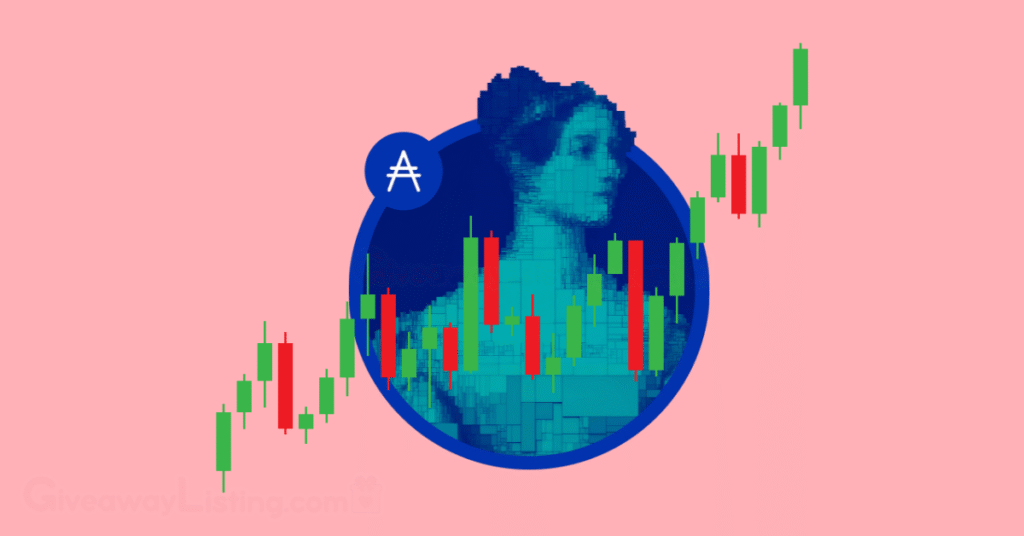
Since its creation, Cardano’s value has seen dramatic peaks and valleys, a common trait in the fast-paced crypto market. The token’s journey has been marked by significant milestones, including an all-time high of nearly $3.10, achieved during the bull run of 2021.
It has also weathered market downturns, hitting an all-time low of just a couple of cents in its early days. A mix of technological progress, market sentiment, and wider economic factors drives these fluctuations.
ADA Price Prediction in 2025
Several key factors could influence ADA’s price in 2025. On the upside, the continued rollout of scaling solutions like Hydra and Leios is critical. The Leios team has already demonstrated the potential for over 1,000 transactions per second, a massive increase that could attract more dApps and users.
The growth of the ecosystem, which now includes thousands of projects and millions of native tokens, provides a solid foundation for demand. Furthermore, a strong base of long-term holders—with reports showing over 15 billion ADA has not been moved in over a year. This suggests high conviction among investors.
On the other hand, factors could pull the price down. Cardano’s methodical, research-driven development is often criticized as being too slow compared to competitors like Solana, which could cause it to lose market share. Internal governance disputes or a failure to effectively use its decentralized treasury could also dampen confidence. Like all cryptocurrencies, ADA is also at the mercy of regulatory changes and broader macroeconomic trends that can affect all risk assets.
Expert analysis for 2025 reflects this mix of optimism and caution. Some forecasts see ADA recovering and pushing past the $1.30 mark, with some bullish analysts projecting a rally toward $1.75 if market conditions are favorable.
Other, more conservative predictions place the average price around $0.95. The consensus is that growth is possible, but it is heavily dependent on the project hitting its roadmap goals and the overall health of the crypto market.
Is ADA Going to Crash or Moon in 2025?
Whether ADA is headed for a crash or a major pump in 2025 depends on which side of the coin you’re looking at. The bullish argument is compelling. The completion of the Voltaire era marks a huge milestone, making Cardano one of the most decentralized and community-driven projects in the space.
The on-chain governance model, where ADA holders control the treasury and future development, builds significant trust. Technological progress, especially in scaling, is tangible, and the secure, research-backed foundation of the network is a major selling point for enterprise and government adoption.
The slow and steady approach, while good for security, has allowed more nimble competitors to capture developer and user attention. The dApp ecosystem, while growing, is still less active than that of Ethereum or Solana. There’s also the risk that on-chain governance could lead to stalemates on critical decisions or that the community might not fund the most impactful projects from the treasury. A major market downturn or a failure to deliver on the promised transaction speeds in a real-world, high-load environment could also trigger a sharp price decline.
The outlook for 2025 is a mix of high potential and significant challenges. The strong fundamentals, dedicated community, and clear technological roadmap point toward growth. However, Cardano must prove it can execute on its vision and compete in a crowded market.
A moon scenario is possible if scaling solutions work as advertised and dApp adoption accelerates, but a “crash” remains a risk if development stalls or the broader market turns against high-risk assets.
For those interested in the market movements of ADA, check out more detailed ADA price predictions.
Cardano Risks, Scams, and Hacks

Getting into Cardano, like any crypto, comes with its own set of thrills and potential spills. The market’s natural ups and downs are part of the game, but there’s another side to the story: scams.
Understanding these risks is the first step to protecting your investment. It’s not just about watching the price charts; it’s about being smart and skeptical in a space where not everyone is playing fair. From market volatility to cleverly disguised phishing schemes, being aware of the potential dangers is crucial for anyone holding or trading ADA.
The Risks Associated With Cardano
The primary risk for any ADA holder is market volatility. The price can swing wildly based on market sentiment, news, and broader economic factors. A single tweet or regulatory announcement from a major government can send prices tumbling or soaring. This is a standard feature of the crypto market, but it requires a steady hand and a clear strategy.
Another point to consider is the competition. Cardano is not the only innovative contract platform out there. It’s in a constant race with giants like Ethereum and faster movers like Solana. Cardano’s famously deliberate, research-first development process, while a strength in terms of security, is also a risk. Delays in rolling out key features could cause it to lose ground to competitors who are quicker to adapt.
Finally, the move to a fully decentralized governance model, while exciting, introduces new uncertainties. Community disagreements over funding or technical upgrades could lead to stalemates or forks, creating instability.
Here is how you can manage some of these risks:
- Do Your Own Research (DYOR): Don’t just rely on hype. Look into the technology, the team, and the project’s roadmap before putting your money in.
- Don’t Put All Your Eggs in One Basket: Diversifying your investments across different assets can help cushion the blow if one of them takes a hit.
- Stay Informed: Keep up with official announcements about network upgrades and roadmap progress. This helps you understand the long-term picture.
- Only Invest What You Can Afford to Lose: This is the golden rule of crypto. The market is unpredictable, so never invest money that you would need for essential living expenses.
How to Avoid Cardano Scams and Hacks?
It’s important to state that the core Cardano blockchain itself has never been successfully hacked. Its security is top-notch, thanks to its peer-reviewed foundation. However, the ecosystem around it is a hunting ground for scammers. Users are the primary targets, and the methods used are becoming increasingly sophisticated.
Some of the most common scams involve fake giveaways. Scammers will create fake social media profiles or run fake live streams, often using AI-generated deepfakes of Charles Hoskinson, promising to double any ADA you send to their wallet address. Another major threat is phishing. This involves creating fake websites that look exactly like popular Cardano wallets (like Eternl, Yoroi, or Lace) or exchanges to trick you into entering your private keys or recovery phrase. Fake tech support agents also lurk on platforms like X, Telegram, and Discord, offering to “help” with wallet issues by asking for your sensitive information.
Here’s a quick checklist of red flags to watch out for:
- Anyone promising to multiply your crypto or offering “guaranteed” high returns is almost certainly a scammer.
- Be immediately suspicious of unsolicited direct messages from anyone claiming to be from “Cardano support” or an official project. Admins will not DM you first.
- Always double-check the URL of any website where you’re connecting your wallet or entering credentials.
- Scammers often create a sense of urgency, telling you an offer is for a “limited time only” to rush you into making a mistake.
- Your recovery phrase, which is the same thing as your seed phrase, is the master key to your funds. Never, ever share it with anyone for any reason.
How to Secure Your ADA?
Taking a few key steps can make a huge difference in keeping your ADA safe from thieves and scammers. Proactive security is your best defense.
- Get a Hardware Wallet: For any significant amount of ADA, a hardware wallet, also called a cold wallet, like a Ledger or Trezor, is the best option. These devices keep your private keys offline, making it impossible for online hackers to access them.
- Use Official Sources: Only download wallet software and apps from the official websites or official app stores. Bookmark these sites to avoid falling for fake links in search results.
- Guard Your Recovery Phrase: Write down your 12 or 24-word recovery phrase and store it in a secure, offline location. Never store it digitally, don’t take a photo of it, or save it in a notes app, or email it to yourself.
- Enable 2FA: Use two-factor authentication on all your crypto exchange accounts and any other related services.
- Practice Good Wallet Hygiene: Consider using a separate hot wallet with a small amount of ADA for connecting to dApps and making regular transactions, while keeping the majority of your funds in your secure cold wallet.
The best advice is to be skeptical by default. Trust only official announcements from the Cardano’s verified channels. Be extremely careful about which dApps you connect your wallet to, and if an offer seems too good to be true, it always is.
Latest News on Cardano
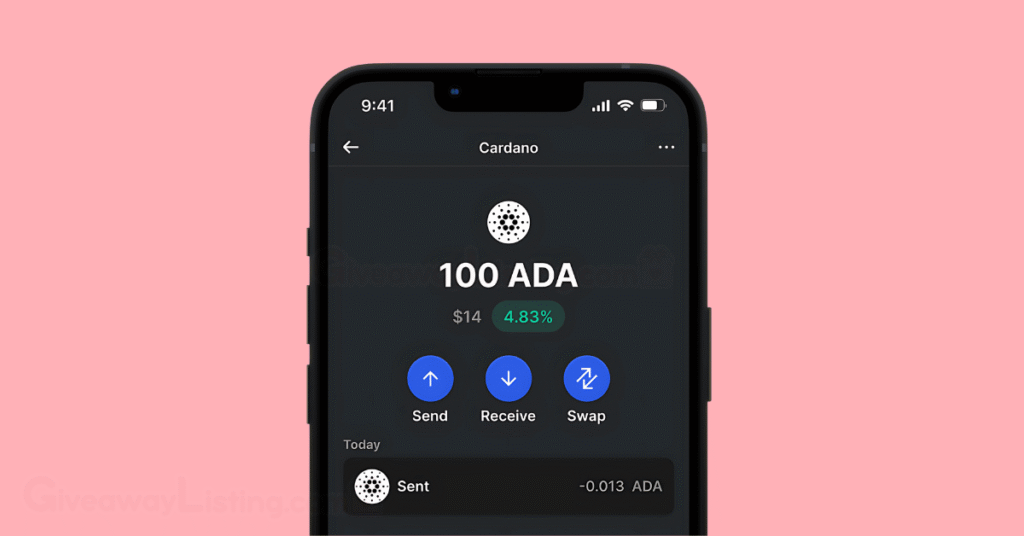
Since its launch in 2017, Cardano has steadily moved through its planned development phases, transforming from a simple cryptocurrency network into a full-fledged smart contract platform with a strong and growing ecosystem.
The journey has seen the network become fully decentralized with community-run stake pools, gain the ability to host dApps and DeFi protocols, and now, enter its final era of on-chain governance. This methodical progress continues with regular updates and community engagement.
Here’s a look at some of the latest developments and upcoming events for Cardano as of December 2025:
- Voltaire Governance in Full Swing: The on-chain governance system is live, with ADA holders actively voting on treasury proposals through a system of Delegated Representatives (DReps). This marks the final step in making Cardano a completely self-sustaining and community-managed blockchain.
- Major Scaling Breakthroughs: The Leios scaling team recently announced a successful demonstration of the protocol, achieving over 1,000 transactions per second (TPS). This is a critical step toward preparing the network for mass adoption.
- Foundation Launches Reeve: The Cardano Foundation has released Reeve, an open-source tool for on-chain financial reporting. They are leading by example, publishing their own 2024 Financial Insights Report on the blockchain for full transparency.
- Global Community Growth: Input Output (IOG) has partnered with TxPipe to support and grow the developer community in Argentina, strengthening Cardano’s presence in Latin America.
- Upcoming Global Events: The Cardano community has several major events on the calendar, including TOKEN 2049 in Singapore (October 1-2), the Cardano Summit 2025 in Berlin (November 10-13), and a presence at India Blockchain Week in Bangalore (November 29-30).
To keep up with the fast-moving world of Cardano, it’s best to follow the official sources. For a curated stream of the latest happenings, you can also check out more Cardano news.
Here are some of the official channels to stay informed:
- Official Website: cardano.org
- Cardano Forum: forum.cardano.org
- X (Twitter): @Cardano, @Cardano_CF
- Telegram: @Cardano
- Cardano Foundation
How to Get Started With Cardano?
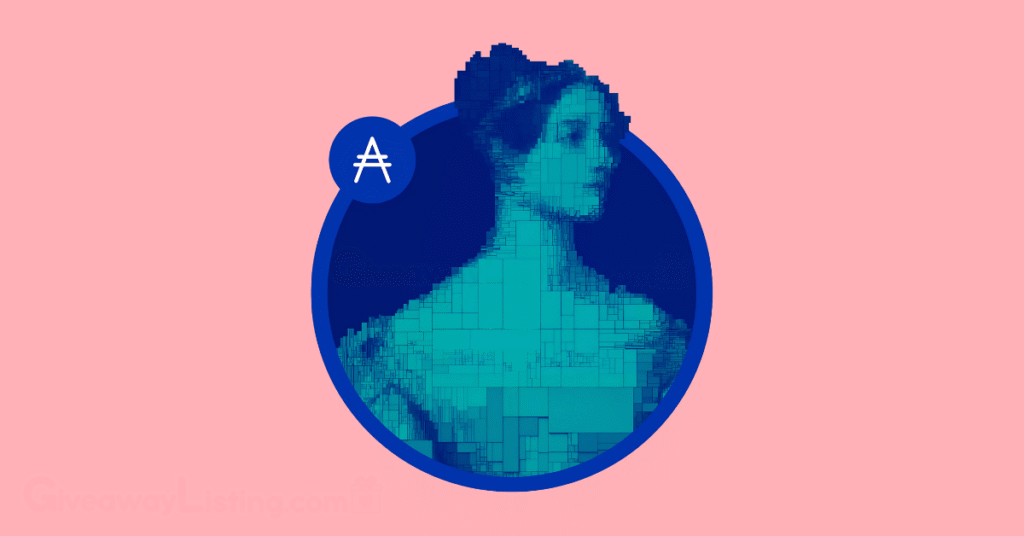
Jumping into the Cardano ecosystem is a straightforward process. You don’t need to be a tech wizard to get involved, whether you’re looking to simply hold ADA, earn rewards, or interact with the applications being built on the network.
Here is a simple, step-by-step guide to get you started:
- Set Up a Cardano Wallet: This is your personal digital wallet where you will store your ADA and other Cardano-native tokens. You have many options to choose from. Software wallets or hot wallets, such as Eternl, Yoroi, and Lace, are apps you can install on your phone or as a browser extension, making them convenient for daily use.
- Buy Some ADA: Once you have a wallet, you’ll need to get some ADA. You can buy ADA from most major centralized cryptocurrency exchanges like Coinbase, Kraken, or Binance. The process typically involves creating an account, verifying your identity, and then purchasing ADA using fiat currency or trading it for another cryptocurrency. After you buy your ADA, it’s a good security practice to withdraw it from the exchange and send it to the personal wallet you created in the first step.
- Stake Your ADA to Earn Rewards: One of the great features of Cardano is that you can earn more ADA just by holding it. This is done through a process called staking” or “delegation. You can delegate your ADA from your wallet to a community-run stake pool. These pools help run the network and, in return, earn rewards that are then shared with everyone who delegated to them. Your ADA never leaves your wallet, so it’s completely safe, and there’s no lock-up period. Staking is a simple way to support the network’s decentralization while earning passive rewards.
- Explore the Ecosystem: With ADA in your wallet, you can start interacting with the growing world of dApps on Cardano. This includes decentralized exchanges (DEXs) for trading tokens, NFT marketplaces for buying and selling digital art, and various DeFi platforms for lending and borrowing. You can also participate in Project Catalyst, Cardano’s decentralized innovation fund, by voting on which new projects should receive funding from the community treasury.
This guide has walked through what Cardano is, from its unique, research-driven origins with Ethereum co-founder Charles Hoskinson to its five-era development plan that has culminated in a fully decentralized, community-governed blockchain. We’ve looked at its efficient Proof-of-Stake system, its dual-layer architecture, its history, and its price action.
Cardano stands out for its methodical approach, prioritizing security and sustainability to build a platform intended for global-scale applications. However, anyone getting involved should be fully aware that, like all digital assets, ADA is subject to high market volatility and numerous online scams. Always prioritize the security of your funds by using official sources, guarding your recovery phrase, and being critical of offers that seem too good to be true.
Here are the most essential points to remember about Cardano:
- It is a Proof-of-Stake blockchain founded on peer-reviewed academic research.
- Its native cryptocurrency is ADA, with a maximum supply of 45 billion.
- Its Ouroboros consensus mechanism is highly energy-efficient and secure.
- Development is split into five eras, with the final Voltaire era enabling full on-chain governance by ADA holders.
- The core blockchain has never been hacked, but users must be cautious of phishing and giveaway scams.
- You can earn rewards by staking your ADA in a non-custodial wallet, meaning you always control your funds.
This information is current as of December 2025.
What is Cardano FAQs
Here are answers to some frequently asked questions
What Exactly Does Cardano Do?
Cardano is a blockchain platform designed for creating and running smart contracts and decentralized applications (dApps). Its native cryptocurrency, ADA, is used to pay for transaction fees and to secure the network through staking. With over 2,000 projects actively building on it, Cardano supports a growing ecosystem of DeFi services, games, and digital identity solutions. It aims to be a more scalable and sustainable alternative to older blockchains.
Is Cardano a Good Investment?
This depends on your risk tolerance and long-term outlook. Cardano is considered to have strong fundamentals due to its research-driven design and eco-friendly Proof-of-Stake system. However, its development has been slower than competitors like Solana, and like all crypto, its price is highly volatile. Analysts’ price predictions for 2025 vary, but many see potential for growth as the ecosystem matures.
What’s Better, XRP or Cardano?
XRP and Cardano are built for different purposes. XRP is optimized for fast and low-cost cross-border payments, making it popular with financial institutions, boasting transaction speeds of up to 1,500 per second.
Cardano is a broader platform focused on smart contracts and dApps, prioritizing security and decentralization through its peer-reviewed approach. The better choice depends on whether you value a specialized payment network or a versatile dApp ecosystem.
Is Cardano Better Than Bitcoin?
Cardano and Bitcoin serve different primary functions. Bitcoin is mainly seen as a store of value or “digital gold,” with a focus on secure, peer-to-peer transactions. Cardano is designed as a multi-functional platform for dApps, offering smart contract capabilities that Bitcoin lacks. Cardano’s Proof-of-Stake system is also vastly more energy-efficient and can handle more transactions per second, making it more scalable for everyday applications.
Is Cardano Better Than Solana?
Solana is known for its incredible speed, capable of handling up to 65,000 transactions per second, and a rapidly growing dApp ecosystem, though it has faced network stability issues. Cardano prioritizes a slower, more secure development process based on academic research. While currently slower, with a TPS of around 250, Cardano’s upcoming scaling solutions aim to increase that number significantly.
Why is Everyone Buying Cardano?
People are buying Cardano for several reasons. Its foundation in peer-reviewed research gives it a strong reputation for security and reliability. The platform is also nearing the completion of its roadmap, which will make it a fully community-governed and self-sustaining ecosystem. Recent technological upgrades, like scaling solutions and privacy features, along with a fixed maximum supply of 45 billion ADA, also make it an attractive long-term holding for many.

